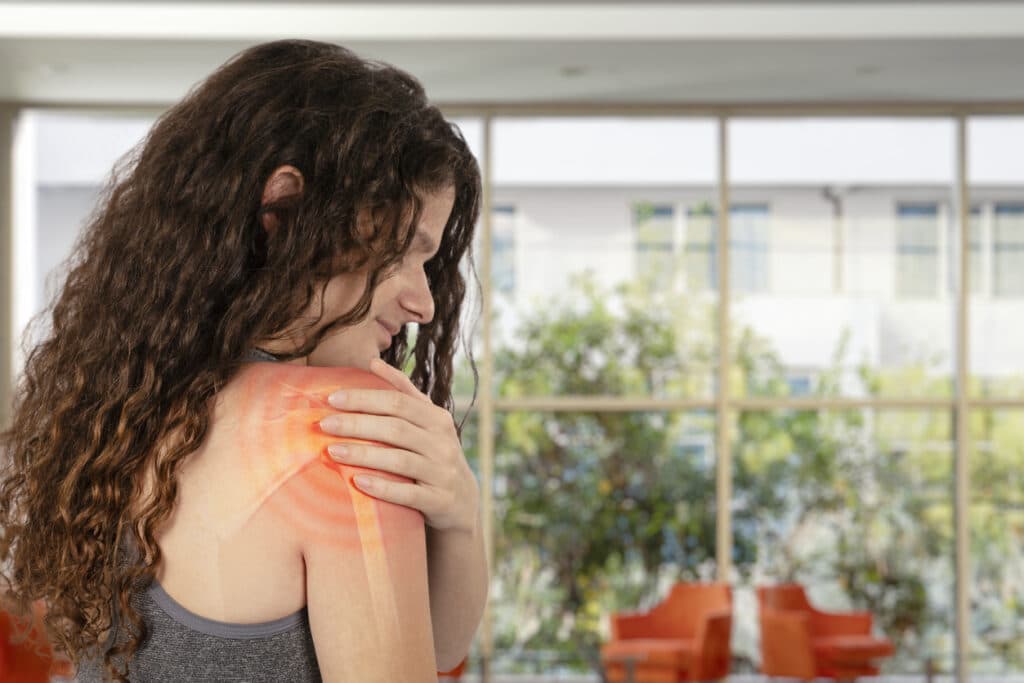
Have you ever experienced a sudden sharp pain in your shoulder after a fall or injury? It’s possible that you may have a sprain in your acromioclavicular (AC) joint which is the joint at the top of your shoulder where your collarbone meets your shoulder blade. An AC joint sprain is a common injury that can cause pain, swelling and limited range of motion. But how do you know if you have an AC joint sprain and how can it be treated? This blog post will provide a complete guide on identifying and treating AC joint sprain.
Identifying an AC Joint Sprain
The most common AC joint sprain cause is a direct blow to the top of your shoulder such as in a fall or sports injury. If you have an AC joint sprain you may experience symptoms such as pain, swelling, tenderness and limited range of motion in your shoulder. You may also feel a popping or clicking sensation when moving your arm or notice a visible bump on the top of your shoulder.
Diagnosing an AC Joint Sprain
To diagnose an AC joint sprain, you should visit a healthcare professional, such as a physiotherapist or chiropractor. They will conduct a physical exam and take medical imaging tests, such as X-rays or MRI, to assess the extent of the injury. The severity of your injury will be classified into grades 1-3, with grade 1 being a minor sprain and grade 3 being a complete tear of the joint.
Treating an AC Joint Sprain
The treatment for an AC joint sprain will depend on the severity of the injury. Here are some common treatment options:
Rest and ice: Resting and applying ice to the injured area can help reduce swelling and pain.
Immobilization: You may need to wear a sling or brace to immobilize your shoulder and allow it to heal.
Physiotherapy: A physiotherapist can help you regain range of motion and strengthen the muscles in your shoulder.
Chiropractic care: A chiropractor can help reduce pain and improve joint mobility through manual adjustments.
Surgery: In severe cases, surgery may be required to repair the joint.
Recovering from an AC Joint Sprain
Recovery from an AC joint sprain can take several weeks to several months, depending on the severity of the injury. During this time, it’s important to follow a rehabilitation program prescribed by your healthcare provider. This may include exercises to strengthen your shoulder muscles, stretching, and heat therapy. You should also avoid any activities that cause pain or strain on your shoulder.
Preventing AC Joint Sprains
While it’s difficult to prevent all injuries, there are some steps you can take to reduce the risk of an AC joint sprain. These include:
- Wearing protective gear when participating in sports or high-risk activities.
- Maintaining good posture and shoulder alignment.
- Building up strength and flexibility in your shoulder muscles through regular exercise.
- Avoiding sudden, jerky movements that can strain your shoulder.
If you suspect that you have an AC joint sprain, it’s important to seek medical attention as soon as possible to prevent further damage. With the right diagnosis and treatment, you can recover from an AC joint sprain and restore full function to your shoulder. And by taking steps to prevent future injuries, you can minimize the risk of another AC joint sprain in the future.
If you have any questions or would like to explore further, please book a free, no-charge online appointment with either myself, Dr. Tyler Baron, BASc, DC or another Kitchener chiropractor at CARESPACE. We are happy to listen and are here to help!

